Is your study group feeling more like a social club than a learning powerhouse? Do you crave deeper understanding and better grades without sacrificing all your free time? Many students think group study is some kind of magic pill for studies. It’s not always the case, but it can be! The truth is, a good group study relies on the right approach and methods.
Imagine a study group where everyone actively participates, ideas spark, and complex topics suddenly click. That’s the power of effective group study. It’s within reach if you use smart strategies.
This article will show you how to transform your study sessions from unproductive chats to collaborative learning experiences. We’ll explore different strategies, backed by research, to help you and your group achieve academic success. You’ll get clear, actionable steps to make the most of your study time.
Group Study: Unleash the Power of Collaborative Learning
Group study can be a very powerful tool for students. It allows for shared knowledge, diverse perspectives, and mutual support. A well-run group study can help students in many ways that you may not have imagined. Group study:
- Boosts Understanding: Explaining concepts to others solidifies your own comprehension. It’s one thing to think you know something. It’s quite another to teach it.
- Fills Knowledge Gaps: Different group members will have strengths in different areas. You can all cover more ground together than alone.
- Improves Problem-Solving: Tackling problems as a group can uncover new strategies and approaches you might not have considered solo.
- Increases Motivation: A supportive group environment keeps you on track and makes studying less of a chore.
- Develops Communication Skills: Group study is like a muscle you work out. It will allow you to explain ideas clearly, listen actively, and respectfully disagree.
However, group study can also be an inefficient waste of time if not done correctly. Common pitfalls include:
- Socializing Too Much: It can devolve into a casual chat.
- Unequal Participation: Some members can dominate the discussion. While others coast along.
- Lack of Focus: Without a clear agenda, the session can drift aimlessly.
- Groupthink: The desire for harmony can stifle critical thinking and diverse opinions.
- Scheduling Conflicts: Finding a time that works for everyone can be a logistical nightmare.
To harness the benefits and avoid the downsides, it’s essential to approach group study with intentionality and structure. The following sections will show you how to create the conditions for a thriving and productive study group.
Crafting Your Dream Team: Assembling the Right Group
The members you bring into your group study are important. Finding the right people makes a difference. It will determine the level of success that your group can achieve.
Here’s what to consider when building your study dream team:
- Complementary Skill Sets: Look for classmates who excel in areas where you struggle. A mix of strengths creates a more robust learning environment.
- Similar Academic Goals: Aligning on desired grades and level of commitment ensures everyone is on the same page.
- Compatible Personalities: Choose individuals you respect and enjoy working with. Positive group dynamics are vital for productivity.
- Manageable Size: Aim for 3-5 members. A smaller group makes it easier to coordinate schedules and ensure everyone actively participates.
- Diversity of Perspectives: Include members with different backgrounds and viewpoints. This can lead to richer discussions and a more comprehensive understanding of the material.
Where can you find these ideal study partners?
- Classmates: Start with people you already know from class. Observe who actively participates and seems engaged.
- Study Groups: Check if your professor or TA organizes study groups. These can be a great way to find like-minded students.
- Online Forums: Many courses have online discussion forums where you can connect with fellow students.
- Academic Clubs: Joining clubs related to your field of study can introduce you to motivated and knowledgeable peers.
Before officially inviting someone to join your group, have a casual conversation to gauge their interest and compatibility. Discuss your study goals, expectations, and preferred working style to ensure it’s a good fit.
Laying the Foundation: Establishing Ground Rules for Success
Before diving into the material, take the time to establish clear ground rules and expectations. This proactive step can prevent misunderstandings and conflicts later on.
Key areas to address include:
- Meeting Schedule: Determine the frequency, duration, and location of your study sessions. Poll group members to find times that work for everyone.
- Attendance Policy: Decide how to handle absences and late arrivals. Consistency is key for maintaining momentum.
- Preparation: Agree on the level of preparation expected from each member. Should everyone read the assigned material beforehand?
- Participation: Encourage active participation from all members. Establish a norm where everyone feels comfortable sharing their ideas and asking questions.
- Respectful Communication: Set guidelines for respectful communication. Encourage active listening, constructive feedback, and respectful disagreement.
- Task Assignments: Divide responsibilities fairly among group members. Who will lead the discussion? Who will take notes?
- Conflict Resolution: Establish a process for resolving conflicts. How will you handle disagreements or personality clashes?
- Technology Use: Determine acceptable levels of technology use during study sessions. Should phones be silenced? Should laptops be limited to note-taking?
- Breaks: Schedule regular breaks to avoid burnout. Use this time to stretch, grab a snack, or engage in light conversation.
Document these ground rules in a shared document that all members can access. Regularly review and revise them as needed to ensure they continue to meet the group’s needs.
Here is a quick reminder for ground rules:
- Be Prepared.
- Attend all meetings.
- Participate Actively.
- Be Respectful.
- Stay on Topic.
- Stick to the Schedule.
- Take Breaks.
Consider using a collaborative tool like Google Docs or a shared online whiteboard to brainstorm and finalize your group’s ground rules.
Dive Into Effective Strategies that Supercharge Your Study Sessions
Once your group is formed and ground rules are set, it’s time to dive into specific strategies that can enhance your learning. These tips, grounded in educational research, will help you maximize your group’s potential.
The Power of Active Recall: Questioning and Explaining
Active recall is a learning technique that requires you to actively retrieve information from memory. This is more effective than passively rereading notes or textbooks.
Here’s how to incorporate active recall into your group study:
- Question Each Other: Take turns asking each other questions about the material. Frame questions that require more than just simple recall.
- Explain Concepts in Your Own Words: Teaching the material to others is a powerful way to solidify your understanding.
- Use Flashcards: Create flashcards with key terms and concepts. Quiz each other and explain the meaning behind each term.
- Practice Problems: Work through practice problems together, explaining your reasoning and approach.
- Simulate Exam Conditions: Set a timer and work through practice questions as if you were taking an actual exam.
Research shows that active recall is far more effective than passive studying techniques. A study published in the journal “Science” found that students who used active recall techniques performed significantly better on exams than those who simply reread their notes.
To further enhance active recall, try using spaced repetition. This involves reviewing material at increasing intervals. As you become more familiar with the information, you can space out your review sessions further apart.
Jigsaw Learning: Dividing and Conquering
Jigsaw learning is a collaborative teaching strategy where each group member becomes an expert on a specific piece of the material. They then teach their expertise to the rest of the group.
Here’s how to implement jigsaw learning:
- Divide the Material: Break the assigned reading or topic into smaller, manageable sections.
- Assign Sections: Assign each group member a specific section to become an expert on.
- Expert Groups: Have members from different groups who have the same section meet to discuss and deepen their understanding.
- Teach the Group: Each member returns to their original group and teaches their section to the others.
- Assessment: Quiz each other on the entire material to ensure everyone has a comprehensive understanding.
Jigsaw learning promotes active learning, collaboration, and a sense of shared responsibility. It also encourages students to develop their teaching and communication skills.
A study published in the “Journal of Educational Psychology” found that jigsaw learning led to increased student achievement and improved attitudes towards learning.
Think-Pair-Share: Structured Discussion
Think-Pair-Share is a simple yet effective technique for promoting active participation and critical thinking.
Here’s how it works:
- Think: The instructor poses a question or problem. Students take a few minutes to think about their own answer or solution.
- Pair: Students pair up with a partner and discuss their ideas.
- Share: Each pair shares their ideas with the larger group.
Think-Pair-Share encourages all students to participate, even those who are typically hesitant to speak up in a large group. It also provides an opportunity for students to refine their thinking and learn from their peers.
A meta-analysis of research on cooperative learning techniques found that Think-Pair-Share consistently led to positive learning outcomes.
Concept Mapping: Visualizing Connections
Concept mapping is a visual learning technique that helps you organize and connect ideas. It involves creating a diagram that shows the relationships between different concepts.
Here’s how to create a concept map in your group study:
- Identify the Main Concept: Write the main topic or concept in the center of a large piece of paper or whiteboard.
- Brainstorm Related Concepts: Brainstorm other concepts that are related to the main topic. Write these around the central concept.
- Draw Connecting Lines: Draw lines between concepts to show how they are related. Label the lines with words that describe the relationship.
- Refine and Revise: Review your concept map and make any necessary revisions. Add or remove concepts, and adjust the connecting lines as needed.
Concept mapping can help you see the big picture, identify gaps in your knowledge, and make connections between different ideas. It’s also a great way to review and summarize material.
Research suggests that concept mapping can improve students’ understanding, retention, and problem-solving skills.
Consider using online concept mapping tools to create and share your group’s concept maps.
Practice Exams: Replicating Real-World Scenarios
Taking practice exams as a group can help you prepare for the real thing by familiarizing yourself with the format, content, and time constraints.
Here’s how to make the most of practice exams:
- Simulate Exam Conditions: Find a quiet space and set a timer for the length of the actual exam.
- Work Individually First: Take the exam individually to assess your own strengths and weaknesses.
- Review and Discuss: After everyone has completed the exam, come together to review and discuss the answers.
- Identify Areas for Improvement: Focus on the questions that were missed or answered incorrectly. Discuss the concepts and strategies involved.
- Repeat the Process: Take additional practice exams to reinforce your understanding and track your progress.
Practice exams not only help you identify areas for improvement but also reduce test anxiety and boost your confidence.
A study published in the journal “Applied Cognitive Psychology” found that students who took practice exams performed significantly better on the actual exam than those who simply reread their notes.
Tools to Enhance Collaboration and Organization
Leveraging technology can significantly enhance your group’s collaboration and organization. There are many online tools available that can streamline your study sessions and keep everyone on track.
- Shared Document Editors (Google Docs, Microsoft Word Online): Create and collaborate on study guides, notes, and outlines in real-time.
- Online Whiteboards (Miro, Mural): Brainstorm ideas, create concept maps, and visualize concepts together.
- Video Conferencing (Zoom, Google Meet): Hold virtual study sessions and share screens to discuss material.
- Project Management Tools (Trello, Asana): Organize tasks, assign responsibilities, and track progress.
- Note-Taking Apps (Evernote, OneNote): Share notes, articles, and research materials with each other.
- Flashcard Apps (Anki, Quizlet): Create and share flashcards for active recall practice.
When choosing tools, consider your group’s needs and preferences. Opt for platforms that are user-friendly and offer the features you need to collaborate effectively.
Navigating Differences: Managing Conflict and Personality Clashes
Even in the most well-intentioned study groups, conflicts and personality clashes can arise. It’s important to address these issues proactively and constructively.
Here are some tips for managing conflict:
- Address Issues Early: Don’t let conflicts fester. Address them as soon as they arise.
- Communicate Openly and Respectfully: Express your concerns calmly and respectfully. Listen actively to the other person’s perspective.
- Focus on the Issue, Not the Person: Frame your feedback in terms of specific behaviors or actions, rather than making personal attacks.
- Find Common Ground: Look for areas of agreement and build from there.
- Compromise: Be willing to compromise to find a solution that works for everyone.
- Seek Mediation: If you’re unable to resolve the conflict on your own, consider seeking help from a neutral third party, such as a professor or TA.
- Set Boundaries: If a group member is consistently disruptive or disrespectful, it may be necessary to set boundaries or even remove them from the group.
Remember, conflict is a natural part of any group dynamic. By addressing issues proactively and respectfully, you can turn conflicts into opportunities for growth and strengthen your group’s bond.
Recognizing Success: Measuring and Celebrating Achievements
It’s important to recognize and celebrate your group’s achievements along the way. This can help boost morale and maintain motivation.
Here are some ways to measure and celebrate success:
- Track Grades: Compare your grades before and after forming the study group.
- Monitor Progress: Track your progress on assignments, projects, and exams.
- Acknowledge Individual Contributions: Recognize and appreciate the unique contributions of each group member.
- Celebrate Milestones: Celebrate milestones such as completing a study guide, acing a practice exam, or finishing a major project.
- Reward Yourselves: Treat yourselves to a fun activity after a particularly productive study session.
Celebrating success doesn’t have to be extravagant. Even a simple “good job, everyone!” can go a long way in fostering a positive and supportive group environment.
From Study Buddies to Scholars: Is Group Study Right for You?
Effective group study is more than just hanging out with friends while textbooks lay open nearby. It is about creating an environment of support, sharing expertise, and actively engaging with the material. When done right, your study group can become a springboard for your learning. It will push you to think deeper, perform better, and achieve more than you could alone.
So, gather your classmates, set some rules, and start studying. You might be surprised at how well you can do.





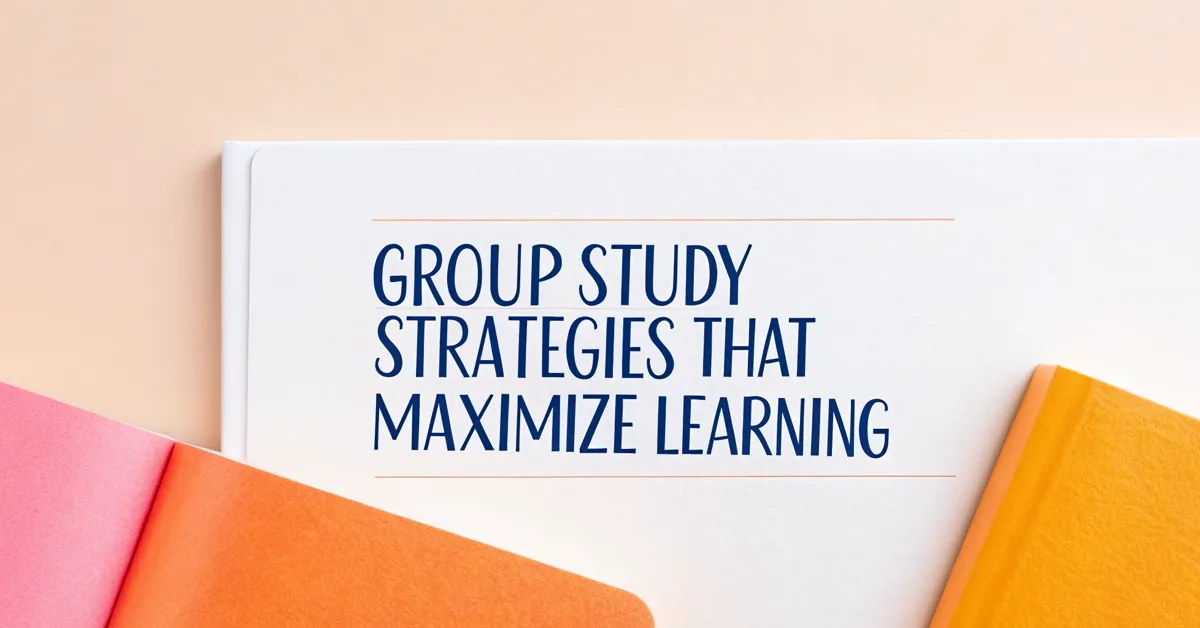





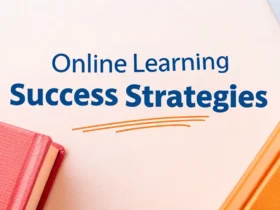
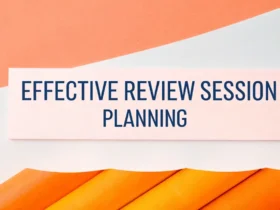
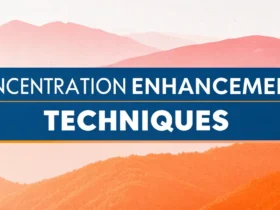
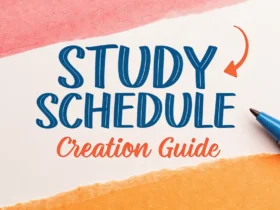
Leave a Reply
View Comments